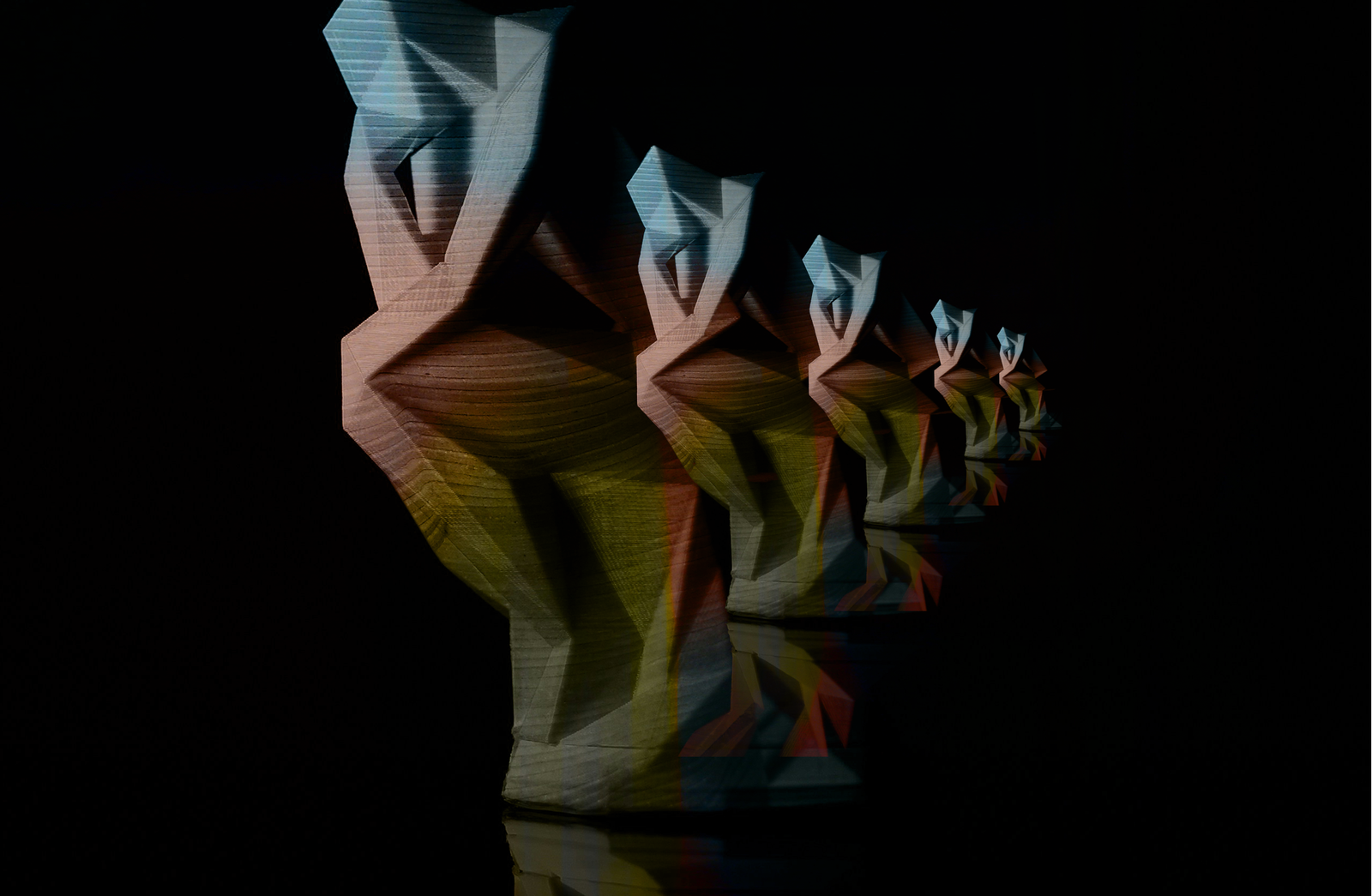Walking Amongst Our Dry Bones
One of the more popular Biblical stories in the Black church is that of the “Valley of the Dry Bones” in Ezekiel 37:1-14. In this story, Ezekiel was born into the priestly line of succession (Ezekiel 1:3), as was the custom of the Ancient Near East. He watched his father live by respecting and obeying the Jewish priestly codes his entire life. Ezekiel was expecting to do the same when God called him out of the vocation of priest, which was highly respected, and into the journey of a prophet for Israel, which was much more tenuous. In his 30th year of life, the year he would have been ordained as a priest, God gave Ezekiel a series of prophetic visions (Ezekiel 1:1). Chief amongst these is Ezekiel 37. In Ezekiel 37:2, God made Ezekiel walk among the Dry Bones, which is antithetical to what Jewish priests-in-training were taught, as the priestly codes order them to stay away from dead bodies, since that would make them unclean and unfit for work as a priest (Leviticus 22:1-9). But in order to speak life into the Dry Bones, which was a euphemism for the exiled people of Israel during Ezekiel’s time, Ezekiel had to walk among them in order for them to be liberated.
In the same way, the Black church must return to the Dry Bones of our marginalized and oft-demeaned communities, and walk amongst them with humility. We need to listen to those whom have been left behind: The poor and lower-class members of our community who are in fact our neighbors. We must reject the false perception of “Black Excellence” that claims that we are exceptional only if we reach a certain income level and social status, and that those who did not are lazy or did not work hard enough. Just like Ezekiel had to walk among the Dry Bones before he realized how many there were and how dead they actually were, we also have to walk around the Dry Bones of our community to truly see the systemic conditions of inequality that led them to that place. Black people have been at the bottom of the socio-economic ladder for centuries.
Our Black neighbors who are poor should be afforded the dignity to tell their story.
In order to speak life into the Dry Bones, which was a euphemism for the exiled people of Israel during Ezekiel’s time, Ezekiel had to walk among them in order for them to be liberated. (2/2) Share on X
The Origins of the Black Church In America
The origins of the Black church in America started in the valley of the shadow of death that gave room for the Dry Bones to talk. Albert J. Raboteau explains this in his classic text, Slave Religion: The “Invisible Institution” in the Antebellum South, where he details the origins of Black people in America’s religious foundations. He connects our religious roots back to West Africa and our traditional religions with a through line to the importance of the Black church in contemporary times. Raboteau describes in meticulous detail how we were captured and enslaved, and had various religious traditions that we carried with us to this “New World.” It took until the First Great Awakening of the 1730s for the enslaved to be converted to Christianity, which is when Raboteau argues that we start to see the invisible institution take form.1
In this period of the ‘pre-American’ colonial New World, Black folks regularly worshipped alongside their enslavers in institutional white churches or in stand-alone Black churches that were under the power and supervision of their white enslavers. However, as Raboteau says, “the religious experience of the slaves was by no means fully contained in the visible structures of the institutional church.”2 Our enslaved ancestors would sneak out of their shacks at night to “Hush Harbors” and have unsanctioned worship services that would focus on freedom and the Black religious experience and material reality. The enslaved disobeyed their enslavers and risked torturous beatings by meeting at night in these hidden church communities, and yet these secret faith communities birthed our own Black religious and cultural language, as well as spirituals as our ancestors made meaning out of their subjugated situation in the stories of Israel and Jesus. Up to this current cultural moment, we as the Black church have leaned on the God of Israel and the Christ who came to set the captives free to inspire our imagination of freedom that will one day come to full fruition. Our Dry Bones came together to sing, dance, and heal on our own terms.
As time went on, the Black church became much more than a place of worship. E. Franklin Frazier discusses this in his seminal work, The Negro Church in America, as he describes his interpretation of the Black church’s origins in slavery and how it transformed into the “Religion of the New Middle Class.”3 Frazier focuses on the great migration from the rural south to urban cities and how Black people in the early and mid-20th century assimilated into white culture in many aspects, with religion being the main one.
This is where the invisible institution becomes the visible institution, and the Black church begins to homogenize into the dominant American religious ecosystem. This is a natural part of any people group’s story in America as they do all they can to survive in society. The distinctive nature of the Black church in the antebellum south was its value system rooted in Black liberation, but this emphasis on freedom was slowly usurped by the middle-class Bourgeoisie value system. In many ways, this capitalistic value system has permeated the Black church since reconstruction and still rings true today. This system values the pursuit of the American dream over Dr. King’s dream of justice rolling like rivers and righteousness like a mighty stream. The American dream can – and has – caused the Black church to become anemic to the plight of the poor and working-class Black parishioners. As a result, the Black church has at times been more concerned with pursuing prosperity and wealth instead of centering the humanity of all people above their own profit. It feels like we no longer help the person lying gravely wounded on Jericho’s road (Luke 10:25-37), but instead, we blame him for putting himself in a position to be in the ditch in the first place.
We need to return to walking amongst the Dry Bones of our community, listening deeply.
The Black church must return to the Dry Bones of our marginalized communities, walking with humility. We need to listen to those left behind: The poor and lower-class members of our community who are in fact our neighbors. (1/2) Share on X
We have to walk around the Dry Bones of our community to truly see the systemic conditions of inequality that led them to that place. Our Black neighbors who are poor should be afforded the dignity to tell their story. (2/2) Share on X
Listening to the ‘Moods of the Unredeemed’
Our analysis of what is good, true, and liberatory for the Black Church needs to come from the Dry Bones. Our character as a church has to be centered on those who are seen as the worst, dishonest, and enslaved. Dr. Keri Day talks about this in her book Azusa Reimagined: A Radical Vision of Religious and Democratic Belonging as she explores the progressive origins of the Pentecostal denomination, painting a picture of what the Pentecostal church could look like with a future that is not centered on capitalistic values. Day leans on religious scholar Karen Bray and borrows her term “grave attending to the unredeemed,”4 which means to sit with and follow those who are “trapped in the demonic circuits of racial capitalism to cultivate political moodiness.”5 Moodiness is the agitation and unsettling nature that one has in response to the material conditions in which one finds oneself, which inspires people to change their circumstances by any means necessary. The unredeemed are “those who refuse to ‘go with the flow’ of late capitalism because capitalist promises reflect relations of cruel optimism…Such people reject the redemptive narratives that market capitalism espouses – that one will be saved if one embraces the democratic promises of capitalism.”6 In other words, Day’s ‘unredeemed’ are the Dry Bones I am advocating for that must be listened to instead of castigated.
Day continues, “What would it mean to listen to the moods of the unredeemed? What questions, insights, and breakthroughs might we experience if we wrestled with their pessimism about American democracy and its capitalist promises?”7 These are the questions that we need to tend to with seriousness in the Black church. In our spaces where we center the voices of those with a Ph.D. in economics or theology, we need to instead center the voices of those who barely graduated high school. As Rev. Dr. Martin Luther King Jr. said in his well-known sermon ‘The Drum Major Instinct:’
“The church is the one place where a Ph.D. ought to forget that he’s a Ph.D. The church is the one place that the school teacher ought to forget the degree behind her name… And any church that violates the ‘whosever will, let him come’ doctrine is a dead, cold church, and nothing but a little social club with a thin veneer of religiosity.”8 (Rev. Dr. Martin Luther King, Jr.)
We need to refocus on those who have little to give.
The distinctive nature of the Black church in the antebellum south was its value system rooted in Black liberation. We need to return to walking amongst the Dry Bones of our community, listening deeply. Share on X
Taking An Actively Constructive Approach
To be clear, I am not asking for us to continue to partake in the project of neo-liberal identity politics where one’s identity makes them either an infallible epistemological expert on their entire community’s situation. I don’t believe that we simply pass the mic to the person who wins the game of ‘who is most deeply oppressed,’ ignoring the material reality of the masses.9 I am merely suggesting for the Black church to listen to those most marginalized amongst them as a first step in returning to our liberative roots.
I suggest that we take an actively constructive approach to rebuilding the Black church – our church – instead of one of passive deference. Our goal should be to tend to the unredeemed that Day talks of, and the Dry Bones from Ezekiel 37, and prepare our spaces to welcome our neighbors. We need to design our buildings, services, and experiences around the material conditions of those who have been deeply damaged the most by America; those who used to be but are no longer in the room. We do this to inspire a cultural shift in the Black church toward a different way of thinking and being that we have not seen or experienced, at least not recently.
My words are not an argument for a new economic system, slogan, or flag to put into one’s social media profile picture. This is about living like Jesus, who walked among the Dry Bones of his day, attending to the poor widow and the fatherless orphan first, not only the powerful Jewish Pharisee and the wealthy Roman tax collector in his company. The colonial logic is embedded deep within our psyche as the Black church, and we need to re-imagine what can be next within our communities. It’s beyond time to do so.
As Paul wrote in 1 Corinthians 2:9, quoting from Isaiah’s liberating words, “No eye has seen, no ear has heard, no mind has conceived what God has prepared for those who love him.”
May this be so in our days.
///
This is about living like Jesus, who walked among the Dry Bones of his day, attending to the poor widow and the fatherless orphan first, not only the powerful Jewish Pharisee and the wealthy Roman tax collector in his company. (1/2) Share on X
The colonial logic is embedded deep within our psyche as the Black church, and we need to re-imagine what can be next within our communities. It's beyond time to do so. (2/2) Share on X
*Editorial Note: Alex’s challenging piece is the third of several articles in a new series that we will publish over the next few weeks, all seeking to answer the (obvious) question, ‘Do Black Lives Matter?‘ with a hearty, robust, empathetic, biblical, and obvious apologetic: YES! They always have, and they always will. One of our Leading Voices, Rev. Dr. Dennis Edwards, introduced this series in April with his piece, ‘Listening to Black Voices Experiencing Oppression.’ You’ll hear from a number of African American voices in the next few weeks as we continue to answer this question with a resounding YES. ~CK
Footnotes
1 Albert J. Raboteau, Slave Religion: The “Invisible Institution” in the Antebellum South (New York, NY: Oxford University Press, 2004), 4.
2 Ibid., 212.
3 E. Franklin Frazier and C. Eric Lincoln, The Negro Church in America. The Black Church since Frazier (New York, NY: Schocken Books, 1976), 80.
4 Keri Day, Azusa Reimagined: A Radical Vision of Religious and Democratic Belonging (Stanford, CA: Stanford University Press, 2022), 155.
5 Ibid., 152.
6 Ibid., 156.
7 Ibid., 156.
8 Martin Luther King, The Radical King, ed. Cornell West (Boston, MA: Beacon Press, 2015), 258.
9 Olúfémi O. Táíwò, Elite capture: How the Powerful Took Over Identity Politics (And Everything Else) (Chicago, IL: Haymarket Books, 2022).



